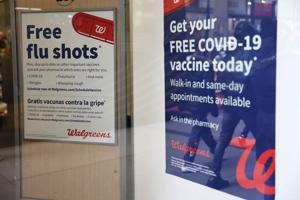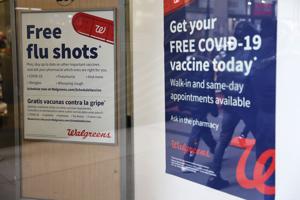Health
Surge in Drug-Resistant Infections Raises Alarms in US

Infections caused by a highly drug-resistant bacteria are surging across the United States, according to a recent study by the Centers for Disease Control and Prevention (CDC). These bacteria, known as NDM-CRE (New Delhi metallo-beta-lactamase-producing carbapenem-resistant Enterobacterales), have developed resistance to nearly all available antibiotics, including last-resort options. As a result, treating these infections is increasingly difficult and can be life-threatening.
The CDC report, published in the journal Annals of Internal Medicine, indicates that infections attributed to NDM-CRE bacteria have surged by an alarming 460% from 2019 to 2023. This spike includes various types of infections such as bloodstream infections, urinary tract infections, wound infections, and pneumonia. Danielle Rankin, an epidemiologist at the CDC, emphasized the seriousness of the situation, stating, “This sharp rise in NDM-CRE means we face a growing threat that limits our ability to treat some of the most serious bacterial infections.”
The NDM-CRE bacteria belong to a broader group known as carbapenem-resistant Enterobacterales (CRE) and possess an enzyme that renders them resistant to most antibiotics. As a result, individuals infected with these bacteria face limited treatment options. The CDC noted that healthcare providers might not immediately suspect NDM-CRE infections, which can lead to inappropriate treatments that fail to combat the bacteria effectively.
The rise of drug-resistant bacteria is primarily attributed to the misuse and overuse of antibiotics in humans, animals, and agricultural practices. This situation has led to the emergence of so-called “superbugs.” According to the Cleveland Clinic, the problem has grown significantly since the CDC issued its first report on antibiotic resistance in 2013, which prompted coordinated efforts among U.S. federal health agencies to address the issue.
Globally, antimicrobial resistance caused an estimated 1.27 million deaths and contributed to nearly 5 million deaths in 2019 alone, as reported by the World Health Organization (WHO). In the United States, while deaths from antimicrobial-resistant infections decreased by 18% overall and by nearly 30% in hospitals between 2012 and 2017, the COVID-19 pandemic has worsened the situation. A 2022 CDC report stated that increased use of antimicrobial agents, including hand sanitizers and disinfectants, led to a rise in drug-resistant infections.
In 2020, CRE bacteria accounted for approximately 12,700 infections and 1,100 deaths in the United States. The latest surge in NDM-CRE infections is partially attributed to the lack of rapid diagnostic methods in many healthcare settings, which delays effective treatment and facilitates the spread of these bacteria. The researchers caution that the reported increase may be an underestimate since data was not available for states such as Texas, New York, California, and Florida.
As the threat of NDM-CRE bacteria continues to grow, healthcare providers are urged to enhance their diagnostic capabilities to ensure timely and targeted treatment options for patients. The challenge of combating these resistant infections underscores the urgency for coordinated action to safeguard public health.
-

 Technology4 months ago
Technology4 months agoDiscover the Top 10 Calorie Counting Apps of 2025
-

 Health2 months ago
Health2 months agoBella Hadid Shares Health Update After Treatment for Lyme Disease
-

 Health3 months ago
Health3 months agoErin Bates Shares Recovery Update Following Sepsis Complications
-

 Technology4 weeks ago
Technology4 weeks agoDiscover 2025’s Top GPUs for Exceptional 4K Gaming Performance
-

 Technology2 months ago
Technology2 months agoElectric Moto Influencer Surronster Arrested in Tijuana
-

 Technology4 months ago
Technology4 months agoDiscover How to Reverse Image Search Using ChatGPT Effortlessly
-

 Technology5 months ago
Technology5 months agoMeta Initiates $60B AI Data Center Expansion, Starting in Ohio
-

 Technology4 months ago
Technology4 months agoRecovering a Suspended TikTok Account: A Step-by-Step Guide
-

 Health4 months ago
Health4 months agoTested: Rab Firewall Mountain Jacket Survives Harsh Conditions
-

 Lifestyle4 months ago
Lifestyle4 months agoBelton Family Reunites After Daughter Survives Hill Country Floods
-

 Technology3 months ago
Technology3 months agoUncovering the Top Five Most Challenging Motorcycles to Ride
-

 Technology4 months ago
Technology4 months agoHarmonic Launches AI Chatbot App to Transform Mathematical Reasoning





















